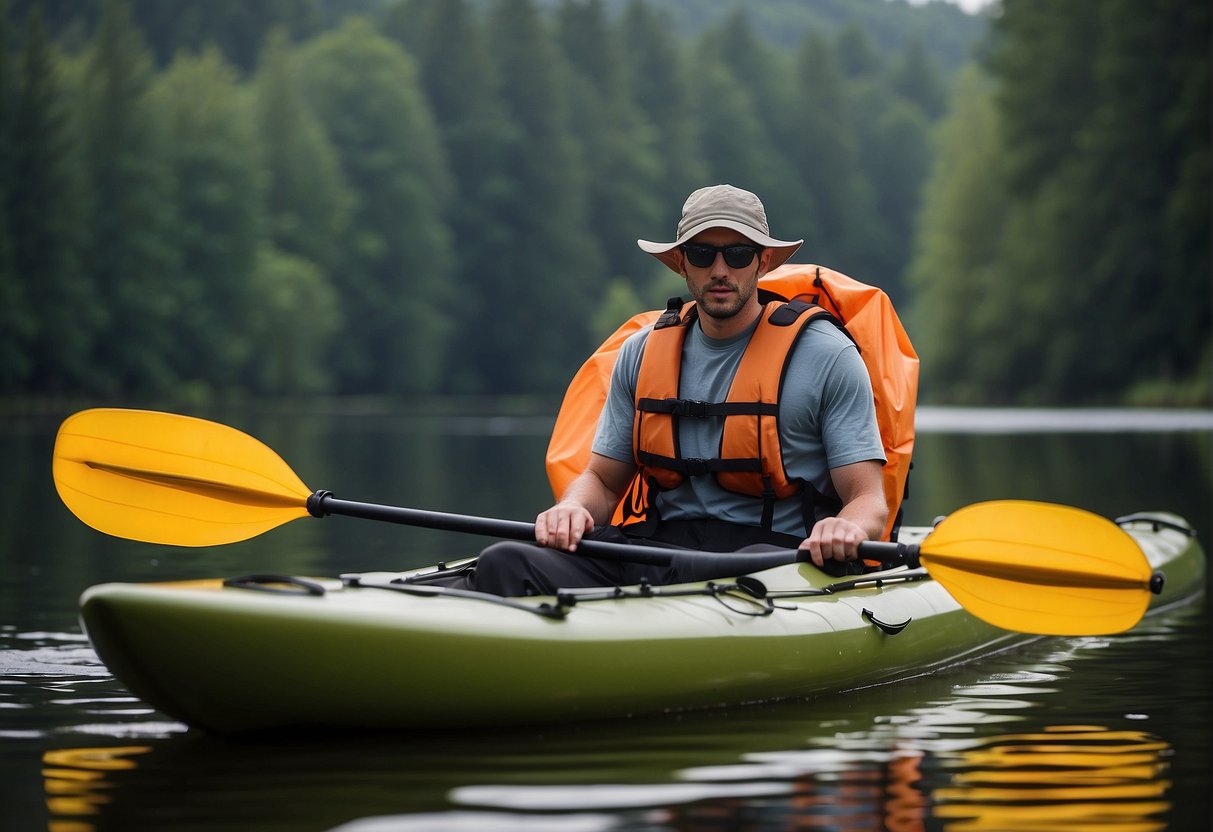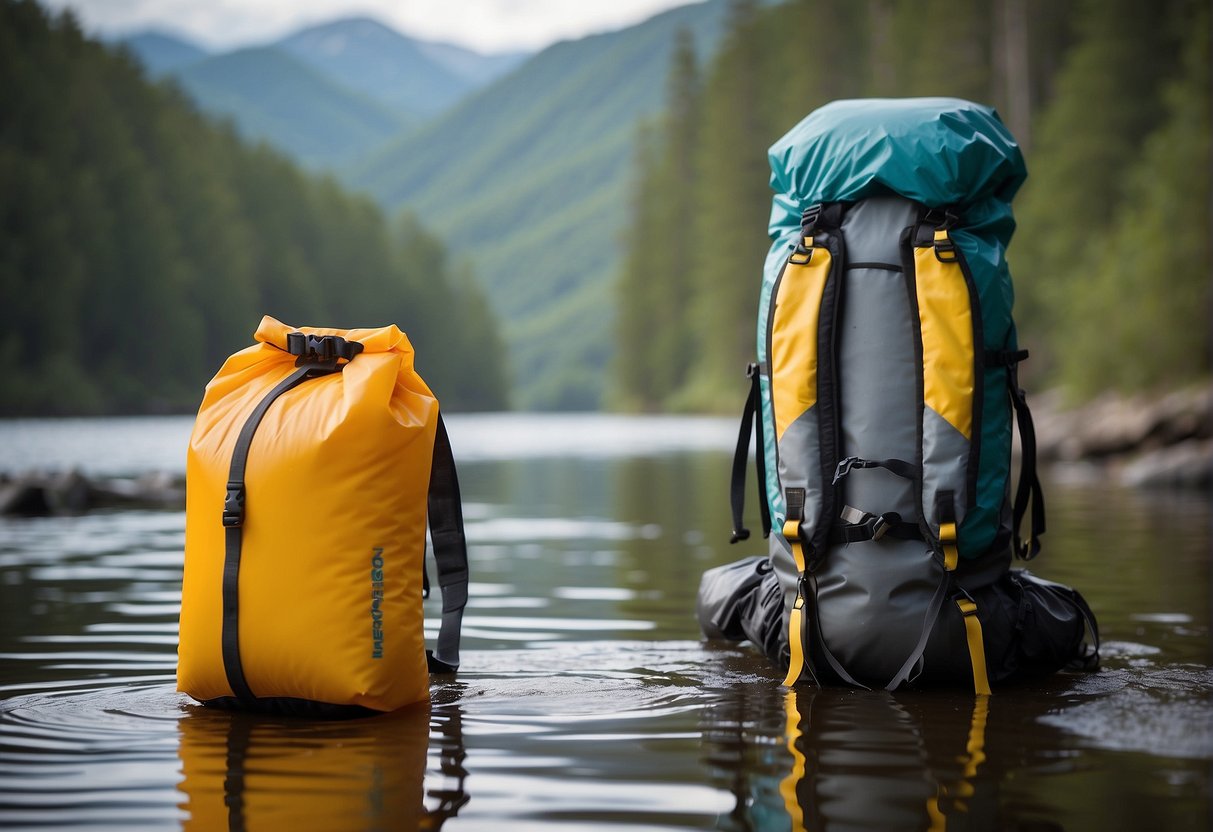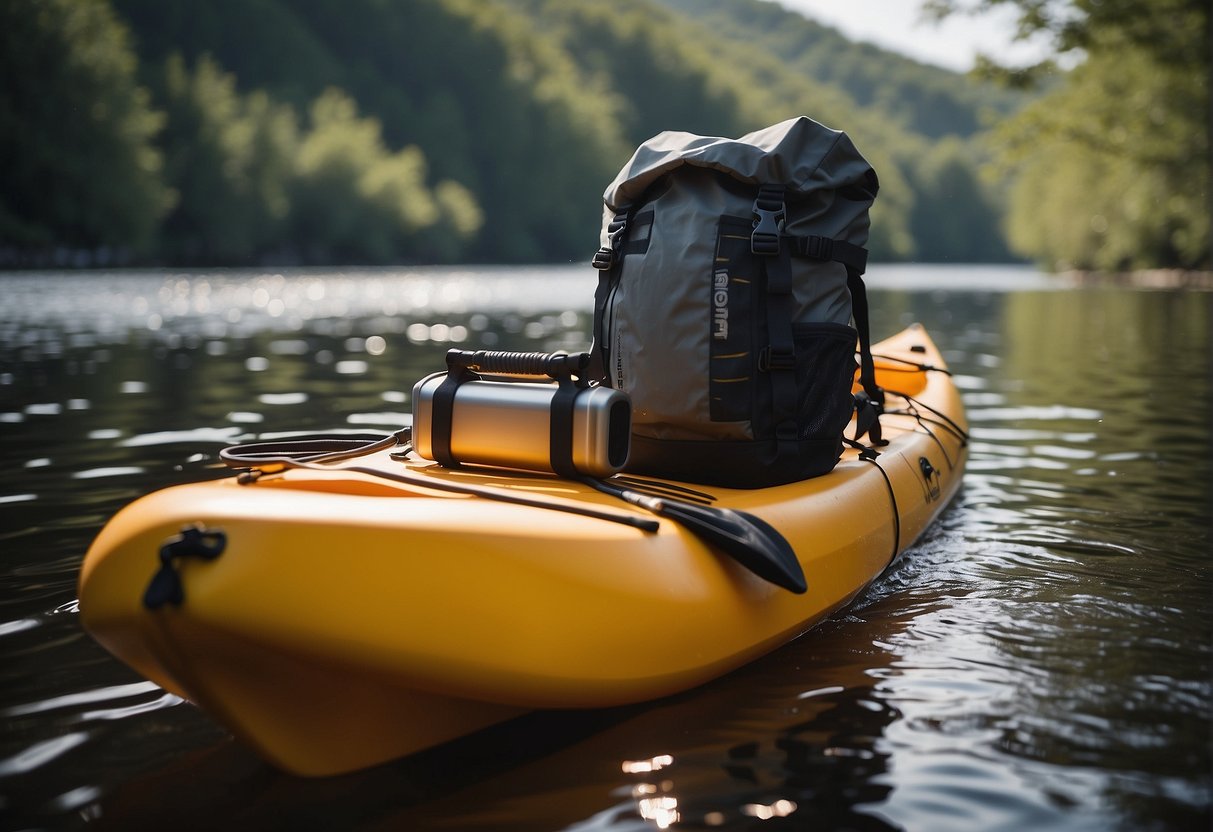When it comes to water-based activities like kayaking and canoeing, having a reliable dry bag is essential for keeping your gear dry and protected. As technology advances, the market has seen a rise in various types of dry bags designed to meet the specific needs of outdoor enthusiasts. From traditional roll-top options to more versatile backpack-style dry bags, there’s a perfect option available to suit every adventurer’s unique preferences and requirements.

Selecting the best dry bag for your kayaking or backpacking escapades will not only ensure the safety and longevity of your belongings but also enhance your overall experience out in the wild. Before diving into the wide array of choices available, it’s essential to understand the various types, materials, and closure systems each bag offers to make an informed decision tailor-made for your specific needs. In this article, we’ll explain the crucial factors to consider when choosing a dry bag and provide insights into using, maintaining, and accessorizing them effectively.
Key Takeaways
- Choosing a suitable dry bag enhances your experience while ensuring the safety of your belongings.
- Know the different types, materials, and closure systems of dry bags to make an informed decision.
- Proper use, maintenance, and accessorizing increase the effectiveness and lifespan of your dry bag.
Understanding Dry Bags
Material and Durability
Dry bags are designed to protect your belongings from water damage, making them essential for outdoor activities like kayaking, backpacking, and camping. The durability and material of a dry bag are crucial factors in determining its effectiveness. High-quality dry bags are typically made from materials such as nylon or vinyl. Nylon is lightweight, while vinyl offers a higher level of abrasion resistance, making it more suitable for heavy-duty use.
Another vital aspect related to durability is the denier rating of the material. Denier refers to the fabric’s thickness, with a higher denier indicating a thicker, more durable material. For example, a dry bag made of 420D nylon is more durable than a bag made of 210D nylon. It’s essential to consider the intended use of the dry bag when selecting the appropriate material and denier rating.
Water Protection Mechanisms
Several mechanisms help ensure that dry bags keep your belongings safe from water damage, with the most common being roll-top closures. Roll-top closures involve folding the top of the bag over several times before securing it with buckles or straps to create an airtight seal.
While most bags are labeled as waterproof or water-resistant, it is essential to understand the difference between the two. Waterproof bags can be submerged in water for extended periods without water seeping inside, while water-resistant bags can only protect against mild splashes or brief submersions.
Another useful feature for extra protection is the presence of a watertight zipper. Watertight zippers will keep the bag’s contents dry, even during heavy rain or brief submersions.
Size and Packing Considerations
Dry bags come in various sizes, measured in liters (L), to accommodate different storage needs. Common sizes include:
- Small (3-5L): Ideal for personal items like phones, wallets, and keys.
- Medium (10-30L): Suitable for clothing, towels, and food supplies.
- Large (40-70L): Perfect for extended trips that require more extensive gear, like sleeping bags or tents.
When choosing the appropriate size, consider the intended use and the amount of gear you need to protect. It’s a good practice to use multiple smaller dry bags to separate and organize items within your backpack, kayaking gear, or camping equipment, instead of relying on one large bag.
Selecting the Best Dry Bag
Features to Look For
When choosing a dry bag for kayaking, it’s essential to consider the features that will make your experience more enjoyable and hassle-free. First, ensure that the dry bag is made of durable materials like laminated high-density nylon or 420D nylon, as this will provide better protection against water or other external factors. Some dry bags, such as the YETI Panga Backpack 28, offer advanced waterproofing with a HydroLok zipper.
Another important feature to consider is the closure type, with the most common being roll-top and zipper closures. Roll-top closures, like those found on the Sea to Summit Dry Bag, offer reliable waterproofing and are available in multiple sizes. Additionally, look for dry bags with quality construction, such as reinforced stitching, to ensure longevity.
Dry Bag Brands and Reviews
Researching various dry bag brands and reading customer reviews can provide you with valuable insights into which product might be best for your needs. Some of the top brands in the dry bag market include:
- YETI: Known for their durable and high-quality outdoor gear, the YETI Panga Backpack 28 has received rave reviews for its exceptional waterproofing and construction.
- NRS: The NRS Dry Sack is praised for its overall performance and reliability.
- Osprey: The Osprey Ultralight Dry Bag is favored for its lightweight design, making it suitable for kayaking or other outdoor activities.
- SealLine: The SealLine Bigfork Dry Pack offers the convenience of a backpack in a waterproof dry bag design.
Budget and Value
When selecting a dry bag, it’s essential to find a balance between budget and value. You don’t need to spend a fortune on a high-quality dry bag, but it’s worth investing in a bag made from durable materials and offering reliable waterproofing.
For those on a budget, many affordable options, such as the Sea to Summit Dry Bag and Osprey Ultralight Dry Bag, offer great performance despite their lower price tag. However, it’s crucial to thoroughly research different options and prioritize essential features like waterproofing and durability.
Keep in mind that investing in a trustworthy dry bag can protect your valuable items during kayaking, making it well worth the cost in the long run.
Types of Dry Bags for Various Activities

Dry bags are essential for keeping your gear dry and protected during various outdoor activities. They come in different materials, sizes, and designs, making them suitable for a wide range of uses. In this section, we will discuss the best types of dry bags for kayaking, backpacking, camping, and other water sports.
Kayaking and Canoeing Specifics
When it comes to kayaking and canoeing, selecting a suitable dry bag is crucial to keep your belongings safe and dry. A common choice among kayakers is the SealLine Bigfork Dry Pack, which provides excellent protection against water and wear. Other top options include the Watershed Futa Stowfloat and the Sea to Summit Big River Dry Bag. Look for dry bags made of heavy-duty materials like vinyl combined with high-denier nylon, which are more durable, abrasion-resistant, and better at keeping water out.
Backpacking and Camping Adaptability
For backpacking and camping enthusiasts, lightweight and versatile dry bags are the go-to choice. They must be compact and easy to carry while offering optimal protection. The Osprey Ultralight Dry Sack is a popular choice among backpackers since it balances weight, durability, and waterproofness. When selecting a dry bag for camping, consider materials like polyurethane (TPU), PVC, or tarpaulin for added strength and water resistance. Availability in various sizes is also essential as it allows you to choose the most convenient option for your specific camping needs.
Other Water Sports Compatibility
For other water sports such as rafting or paddle boarding, dry bags must provide reliable waterproof protection and maintain durability in demanding conditions. Materials like vinyl and high-denier nylon offer the perfect blend of strength and water resistance. The NRS Dry Sack is a highly recommended option for its durable construction and roll-top design that effectively seals out water.
When choosing a dry bag, always consider the activity, environment, and specific needs of your equipment. By selecting the right type of dry bag, you can be confident that your gear will remain dry and protected during your favorite outdoor adventures.
Dry Bag Use and Maintenance
Packing Tips for Dry Bags
When packing a dry bag, it’s essential to maximize space and ensure the bag’s waterproof capabilities. Here are a few tips to help you pack effectively:
- Roll your clothes: Rolling clothes tightly helps save space and keep them wrinkle-free.
- Use the right size: Choose a dry bag with an appropriate capacity for your gear. Smaller bags (5-10L) are suitable for personal items, while larger bags (20-30L) can accommodate more extensive gear.
- Distribute weight evenly: Place heavier items at the bottom of the bag and lighter ones on top to maintain balance and ease of use.
- Keep air out: Squeeze out excess air before sealing the bag to improve its waterproof performance.
Remember, ease of use is crucial for dry bag effectiveness, so don’t overpack or wedge items inside forcefully.
Caring for Your Dry Bag
Maintaining your dry bag to ensure its durability and longevity is simple. Here are some essential tips for proper care:
- Rinse after use: After exposure to sand, saltwater, or dirt, rinse your dry bag with clean water to prevent residues from harming the materials.
- Dry thoroughly: Hang the bag upside down in a well-ventilated area and allow it to dry completely before storage.
- Inspect for damage: Periodically check the bag’s seams, closures, and material for signs of wear or damage. Address any issues promptly to prevent further deterioration.
- Avoid harsh chemicals: Do not use solvents or abrasive cleaners on your dry bag, as they can deteriorate the material and affect its waterproof capabilities.
Following these basic maintenance tips will keep your dry bag in top condition, ensuring it continues to protect your belongings effectively during your outdoor adventures.
Accessorizing Your Dry Bag

Enhancing Functionality with Add-Ons
To make the most of your dry bag, consider adding some functional accessories to enhance its capabilities. One popular add-on is a shoulder strap. A detachable, adjustable shoulder strap makes it easy to carry your dry bag when you’re on the go. It allows you to wear the bag across the body or over the shoulder, redistributing the weight for a more comfortable carrying experience. Shoulder straps are especially useful when you need to haul heavy or bulky items.
Another useful accessory to consider is the D-ring. D-rings are simple metal or plastic loops that can be attached to dry bags to provide attachment points for carabiners or other securing mechanisms. They can help you organize your gear and keep it close at hand during water-based activities, such as kayaking or canoeing. D-rings can also be used to attach your dry bag to a larger backpack for easy transportation.
Customization Options
If you’re looking for ways to make your dry bag stand out, consider color choices. Dry bags come in a wide range of colors, from bright hues like neon orange and yellow for high visibility, to more subdued tones like black and gray. Selecting a color that suits your personal style or purpose can add a touch of individuality to your gear.
Another customization option is the addition of compression straps. Compression straps are adjustable straps that attach around the dry bag, allowing you to tighten and compact the contents of the bag, thus saving space and making it more manageable. Compression straps can also stabilize your belongings, preventing them from shifting during activities.
In summary, accessorizing your dry bag with functional add-ons such as shoulder straps or D-rings ensures your bag is not only practical but comfortable and customizable. With a wide range of colors and the option to include useful attachments like compression straps, a dry bag serves as an essential piece of gear for any water-based adventure.
Dry Bag Safety and Emergency Use

Ensuring Gear Protection in Extreme Conditions
Dry bags are essential for protecting your belongings during water-based activities such as kayaking and canoeing. They are designed to withstand extreme conditions and provide a high level of waterproofness. A well-constructed dry bag will be capable of being fully submersible, ensuring the safety of your gear even in challenging environments.
When selecting a dry bag, it is crucial to consider its material, closure system, and the potential for it to become submerged. The best dry bags utilize materials such as PVC and TPU, which maximize durability and waterproofness. A secure closure system, such as a roll-top or airtight seal, is also vital in preventing water from entering the bag.
- Material selection: PVC or TPU for maximum durability and waterproofness
- Closure system: Roll-top or airtight seal to prevent water ingress
Emergency Readiness and Response Features
In addition to gear protection, dry bags can provide valuable safety features in emergency situations. Some models, like the Marchway Floating Waterproof Dry Bag, are equipped with a floating design, ensuring that your bag and its contents remain accessible and easy to spot in case of a capsizing event.
Meanwhile, other dry bags feature attachment points or integrated straps that can be connected to your kayak or canoe. This allows you to secure the bag to your vessel, preventing it from becoming lost in the event of an accident. Furthermore, it is prudent to invest in a dry bag with a highly visible color or reflective elements to enhance its visibility, enabling faster retrieval during an emergency.
- Floating design: Bags that stay afloat for easy spotting
- Attachment points or straps: Secure the bag to your boat to prevent loss
- Visibility features: Bright colors or reflective elements for rapid identification
In conclusion, a high-quality dry bag that offers both gear protection and emergency readiness features is an essential piece of equipment for kayakers and canoe aficionados. Ensuring you have the right dry bag for your needs will help you enjoy your water-based adventures with confidence and peace of mind.
Frequently Asked Questions
What are the key features to look for in a high-quality dry bag for kayaking?
When selecting a high-quality dry bag for kayaking, it is important to consider factors such as waterproofing, durability, and closure systems. A good dry bag should have welded seams to prevent water from entering. The closure system should be secure, often featuring a roll-down and buckle design. Material choice affects durability; common materials include vinyl, nylon, and PVC.
How do I choose the right size dry bag for kayak camping?
To choose the right size dry bag for kayak camping, consider the types of items you need to store and the duration of your trip. It’s essential to keep essentials like clothing, food, and electronics dry. Typical dry bag sizes range from 5 to 60 liters. For short trips, a smaller bag around 10 to 20 liters may suffice, while longer expeditions might require larger bags of 30 to 60 liters.
Can dry bags withstand prolonged submersion during kayaking or boating?
While many dry bags are designed to protect items from splashes or brief submersions, they may not guarantee complete waterproofing during prolonged submersion. For added protection, consider using double-banded roll-down closure bags like the Discovery View or use a secondary waterproof container for sensitive electronics.
What are the benefits of a dry bag backpack over a traditional dry bag for water sports?
A dry bag backpack offers additional versatility and convenience over traditional dry bags. They typically feature adjustable padded shoulder straps, making them more comfortable to carry during hikes and portages. Good examples are the Patagonia Guidewater Backpack and the YETI Panga 50 Dry Duffel. They may also have extra pockets for organization and easy access to essential items.
Are there any specific brands of dry bags recommended for durability and waterproofing in kayaking?
Several reputable brands produce high-quality dry bags, such as Sea to Summit, Earth Pak, Watershed, Osprey, and YETI. These brands often prioritize durable materials, strong closures, and reliable waterproofing to ensure the safety of your belongings during water sports.
How can I safely secure a dry bag or backpack while kayaking?
To safely secure a dry bag or backpack while kayaking, consider using a bungee cord system or straps to attach the bags to your boat. Many kayaks have built-in attachment points for convenience. Make sure that the bag is tightly secured and will not hinder your movement or the kayak’s balance. Additionally, avoid overloading the bag or kayak to maintain stability.
Conclusion
In summary, a high-quality dry bag is essential for outdoor enthusiasts engaging in activities like backpacking, kayaking, and boating. The best dry bags are durable, watertight, and easy to use. Combining these attributes is crucial to ensuring your belongings remain secure and protected from water damage during your adventures.
Several top dry bags stand out in both performance and construction:
- Sea to Summit Big River Dry Bag: Chosen as the best overall option for kayaking, this bag offers excellent durability and protection against water ingress.
- Laminated High-Density Nylon Bag: This bag features a HydroLok zipper and is praised for its fully watertight sealing, intense durability, and quick access.
When selecting a dry bag, bear in mind the following key factors:
- Material: Choose materials that are both waterproof and long-lasting, such as high-density nylon or laminated fabrics.
- Closure Type: Opt for systems like HydroLok zippers or roll-top closures that provide optimal watertight sealing.
- Size and Capacity: Pick the appropriate size for your intended activity, with options ranging from 5L to 105L to accommodate various gear quantities.
Lastly, user reviews and expert recommendations from sources like Travel + Leisure and Paddling.com can help you make an informed decision when selecting the perfect dry bag for your outdoor pursuits. Consider factors such as your budget, preferred activities, and desired features to find the ideal dry bag that best meets your needs.








